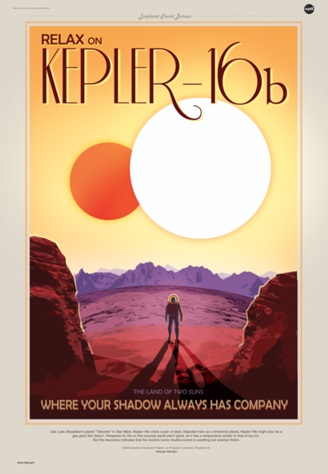
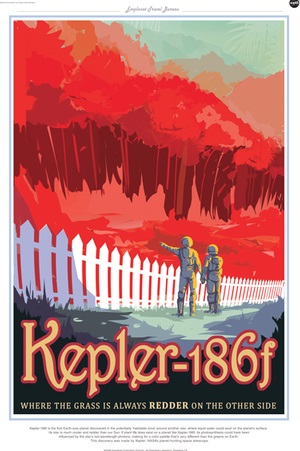
Haunting the Web Since 1999



By way of Follow Me Here, Gizmodo looks at five massive telescopes that will change the game, including the James Webb Space Telescope, a.k.a. Hubble 2.0. “Since blowing past its initial budget and launch data, NASA promises the ambitious project is on-track for 2018. And it better, because astronomers are eagerly awaiting its data.”

And here’s your counterpoint: Creationist Ken Buck argues that space exploration is a boondoggle because aliens are going to Hell anyway. “Ham argued that ‘secularists are desperate to find life in outer space’ as a part of their ‘rebellion against God in a desperate attempt to supposedly prove evolution.'”
Erm, yeah. I would hope the John Olver rule is in effect if and when this fellow is inevitably queried about his views on television, against Bill Nye or Neil DeGrasse Tyson or somesuch.
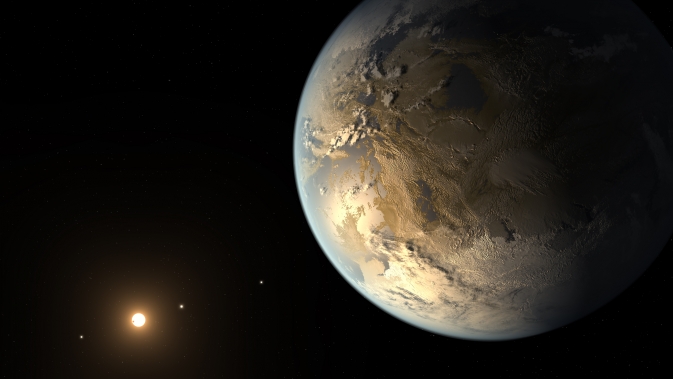
New planets have been discovered at a pretty decent clip of late. But, in a milestone, NASA’s Kepler Telescope finds in Kepler 186f, 500 light years away, “the first Earth-size planet orbiting a star in the ‘habitable zone’ — the range of distance from a star where liquid water might pool on the surface of an orbiting planet.” (“Earth-size” being the key word here — Kepler has previously found larger planets in the habitable zone.) To put it all down and start again, from the top to the bottom and then…
Update: Interesting speculation: Does Kepler 186f bode ill for our future? “This apparent absence of thriving extraterrestrial civilizations suggests that at least one of the steps from humble planet to interstellar civilization is exceedingly unlikely. The absence could be caused because either intelligent life is extremely rare or intelligent life has a tendency to go extinct.”
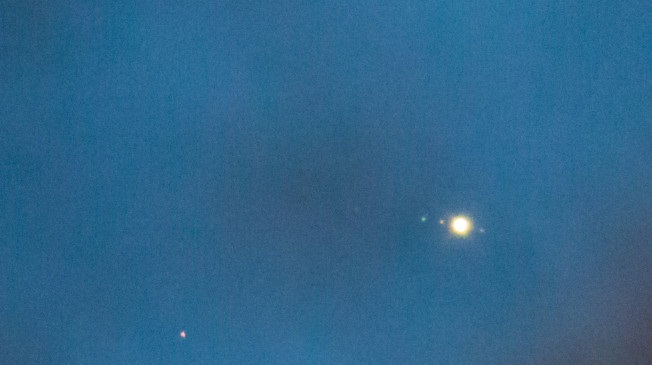
NASA sets aside some money for a robotic mission to Europa. “No details have been decided yet, but NASA chief financial officer Elizabeth Robinson said Tuesday that it would be launched in the mid-2020s.”
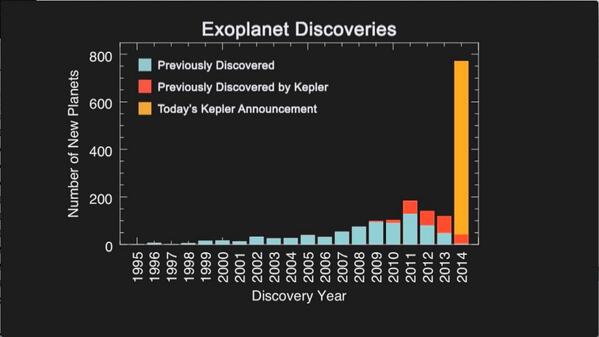
NASA announces 715 new planets found by the Kepler telescope, and that’s only from the first two years of data. “About 94 percent of the new alien worlds are smaller than Neptune, researchers said, further bolstering earlier Kepler observations that suggested the Milky Way galaxy abounds with rocky planets like Earth…four of the worlds are less than 2.5 times the size of Earth and reside in the ‘habitable zone,’ that just-right range of distances that could allow liquid water to exist on their surfaces.”
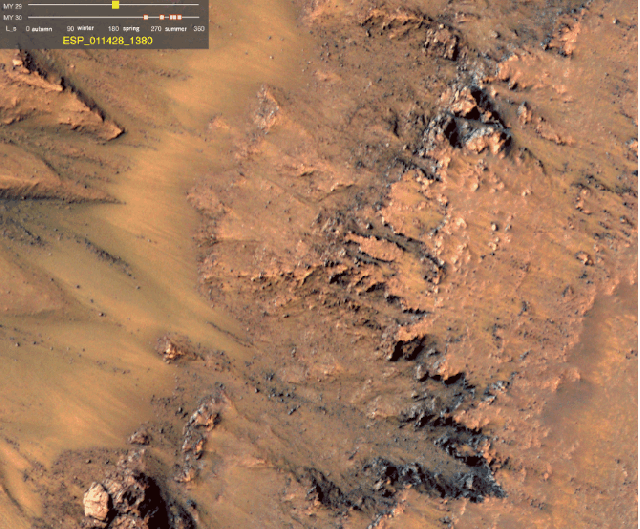
Via io9, Scientists at NASA’s JPL find the strongest evidence of currently extant water on Mars yet. “We still don’t have a smoking gun for existence of water…Although we’re not sure how this process would take place without water.”
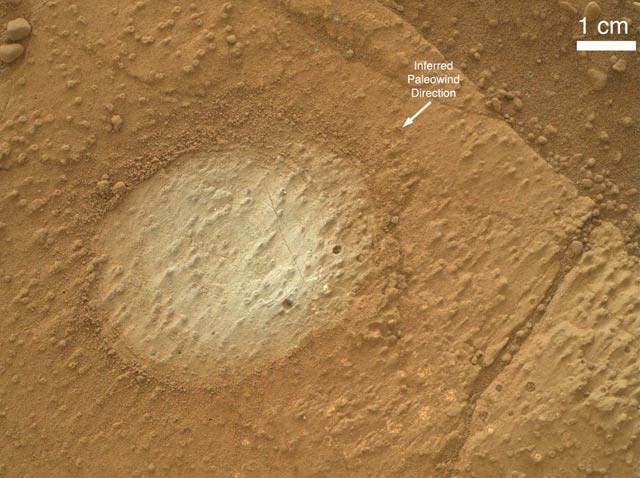
Where do bad folks go when they die? They don’t go to heaven where the angels fly. Mars? Hrm…well, maybe. Curiosity finds the remnants of what appears to be an ancient Martian lake in Yellowknife Bay, part of Gale Crater. Unfortunately, “[e]ven if there were fossils in the mudstone, Curiosity doesn’t have the right kind of equipment to see them. That job will be left to the Mars rover set to launch in 2020.”
(Klaatu barada nitko?) All that being said, one Comic-Con remake reveal I can get excited about — although “Executive Producer Seth McFarlane” gives me a moment of pause — is Neil DeGrasse Tyson’s upcoming 13-episode reboot of Cosmos.
“‘There’s never been a more important time for COSMOS to re-emerge than right now. I want to make this so entertaining, and so flashy, and so exciting that people who have no interest in science will watch just because it’s a spectacle,'” MacFarlane said in a news release.”
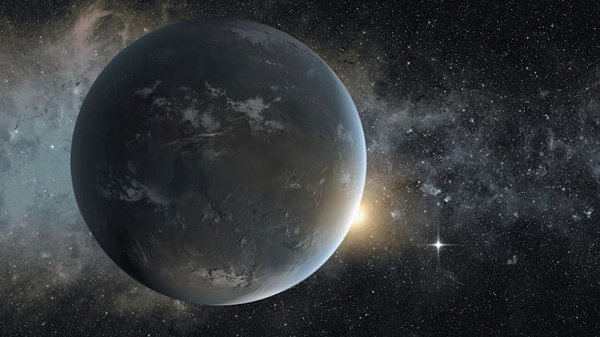
Of late, astronomers have been finding new planets all the time, including one right in our cosmic backyard. Still, these two seem special: NASA has found two of the most Earth-like planets yet in Kepler 62f and Kepler 62e, 1200 light years away.
“The Kepler 62 system resembles our own solar system, which also has two habitable planets: Earth and Mars, which once had water and would still be habitable today if it were more massive and had been able to hang onto its primordial atmosphere.”